Jewellery Liquid Polish Machine
SuperbMelt is a top-tier manufacturer of jewelry equipment in China.
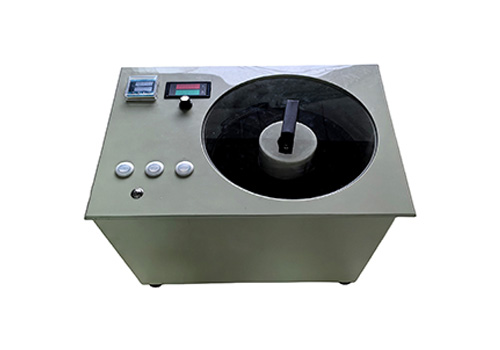
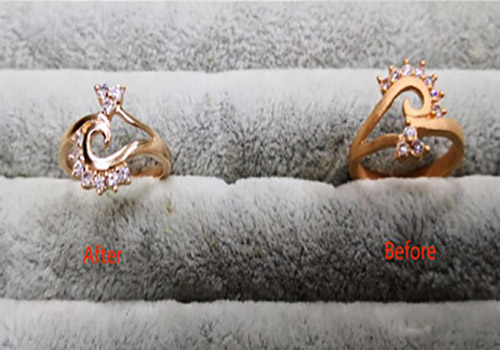
The SuperbMelt Jewellery Liquid Polish Machine can polish three different types of metal jewelry (K gold, silver, and copper), with a maximum capacity of 20 pieces for each type of metal. This significantly improves the jewelry processing speed, meeting your production demands.
This machine is commonly used in jewelry manufacturing, repair shops, and retail stores to enhance the appearance of rings, bracelets, necklaces, earrings, and other types of jewelry, making them look clean, bright, and rejuvenated.
The 3-in-1 polishing machine features three electrolytic tanks, allowing the use of three different electrolytic solutions at the same time. Each batch can polish up to 20 pieces, including rings, necklaces, bracelets, and other jewelry made from gold, silver, copper, K gold, and other metals. Compared to traditional mechanical polishing, this equipment offers significant advantages such as no blind spots in polishing, high batch yield, and lower polishing costs.
If you need more information about jewelry processing or polishing, please contact SuperbMelt, and we will tailor a solution for you!
| Model number | SPB-GRF3-1 (three-in-one) |
| Power source | AC 220V/DC 0-15V |
| Power | 1kw Max 50A |
| Machine hook | 20*3pcs |
| Sheet Thickness | 5-0.2cm |
| Batch production capacity | Silver: 5.2kg Copper:5.2kg K gold:4kg |
| Electrolyte capacity | 4L |
| Metal electrolyte ratio | Copper: 1.3L electrolyte/2.6L water Silver: 1.3L electrolyte/ 2.6L water K gold: 4L electrolyte / no water |
| Dimension | 420mm*310mm*36mm 18kg |
| Weight | 1.5kg |
| Applicable metal | copper , silver, K gold, (No pure gold, platinum) |
- Jewelry Manufacturing: This machine’s main application is in the polishing of gold, silver, copper, and K-gold jewelry. It is perfect for creating finely polished, retail-ready products of superior quality.
- Manufacturing of Dental and Medical equipment: When it comes to making dental and medical equipment, accuracy is essential. These tools can be checked for flaws that could harbor bacteria or result in harm using the polishing machine.
- Watchmaking: Each component’s aesthetic polish is crucial in the watch industry. With this equipment, you may get a high-end quality while polishing watch casings and other metallic components.
- Automobile and Aerospace Components: The machine can be utilized, albeit on a smaller scale, to polish precision parts in the automobile and aerospace sectors, where faultless surfaces are essential for both functionality and appearance.
- Art & Sculpture: The accurate polishing capabilities of this machine are especially beneficial to artists and sculptors who work with metal, since it enables them to obtain the necessary finish on small metal sculptures and installations.
- Experts in the field of antique restoration may preserve and improve the appearance of small metal objects without causing harm to the original material by using this machine to gently polish and repair them.
- Precision engineering and electronics: This machine can also assist sectors that need highly polished metal parts for machinery and electronics, enhancing the performance and dependability of these parts.
- Multi-Metal Capability: It is adaptable for working with gold, silver, copper, and K-gold jewelry since it has the ability to polish three distinct metals at once. This simplifies the polishing procedure and eliminates the need for several machines.
- High Capacity: The device has the capacity to process up to 20 pieces of each type of metal at once, greatly increasing productivity and enabling large-scale batch processing that is perfect for raising production rates.
- Efficiency: By guaranteeing that every piece of jewelry achieves the appropriate degree of smoothness and shine at the same time without creating dead angles, it improves the overall quality of the final items.
- Cost-Effective: It is a cost-effective solution for jewelry polishing because of its high throughput and excellent polishing capability, which lower labor expenses and consumable usage.
- tiny form: The machine’s tiny form makes it ideal for small workshops or businesses with limited space, even with its great capacity and versatility.
- Simple Controls and Mechanisms Make It Easy to Operate: The machine’s user-friendliness minimizes the amount of time and expertise needed for professional results in training.
- Durability: This machine delivers long-term durability and performance, minimizing maintenance expenses. It is made of high-quality components and is built to endure the demands of jewelry polishing.
Why SuperbMelt Jewellery Liquid Polish Machine



Any Question About SuperbMelt Jewellery Liquid Polish Machine
FAQ Guide of Small Jewellery Polishing Machine
- 1. What is a jewellery polisher?
- 2. How do I choose a polishing machine?
- 3. What are the different types of small jewelry polishing machines?
- 4. What is a small electropolishing machine?
- 5. What are the cost benefits of using a small electropolishing machine?
- 6. Can electropolishing improve the corrosion resistance of jewelry?
- 7. How long does the electropolishing process take?
1. What is a jewellery polisher?
A jewelry polisher is a device or instrument that polishes, refines, and improves the surface of jewelry items to give them the appropriate sheen. By bringing out the sheen and shine that define jewelry’s appeal and eliminating tarnish, scratches, and other imperfections from precious metals and other materials, this equipment is essential to the creation and maintenance of jewelry. Here’s a closer look at the duties of a jewelry polisher:
Jewelry Polisher Types
Buffing machines: These are powered devices that polish jewelry by holding buffs and brushes coated in various compounds on spindles. Because of their versatility, buffing machines can be used for everything from preliminary rough polishing to high-shine finishing.
Tumbler polishers: Frequently utilized for large-scale finishing, tumbler polishers revolve jewelry within a barrel filled with abrasive materials like steel pins or ceramic bits for polishing. Over time, this action polishes the surfaces and gradually dulls sharp edges.
Ultrasonic Polishers: These devices use ultrasonic waves to stir up a liquid solution that the jewelry is submerged in, giving it a clean and polished appearance. This method works great for accessing the nooks and crannies of intricate parts.
Pen platers are used for more intricate plating or polishing tasks when accuracy is crucial. These are tools that resemble pens and are used to apply plating solution to particular parts of jewelry.
Electropolishers: These devices remove tiny amounts of metal off an item by using an electrochemical technique to smooth and polish the metal surface. Getting a clean, glossy surface and increasing corrosion resistance are two main benefits of electropolishing.
What a Jewelry Polisher Does
Smoothing Surfaces: Jewelry polishers smooth out ridges and get the metal ready for direct sale or additional polishing.
Improving Appearance: These machines use a variety of polishing methods to increase the brilliance and sheen of jewelry, which draws in more buyers.
Cleaning: A lot of polishers also clean the jewelry by eliminating oxidation, grease, and debris. This is especially true with ultrasonic and electropolishing systems.
Enhancing Durability: Polishing can make jewelry more durable by minimizing areas where corrosion or wear might start by eliminating surface flaws and producing a smooth, even surface.
Repairing Damage: Polishers are able to eliminate small dents and scratches from worn or outdated jewelry, improving its overall quality.
Uses
Jewelers, metal smiths, and production environments that make jewelry and fine metal goods use jewelry polishers widely. They are also used to preserve and bring back the beauty of jewelry pieces in retail environments and repair shops.
In summary, a jewelry polisher is an essential instrument for the jewelry business, serving both functional and aesthetic functions by guaranteeing the beauty and durability of jewelry pieces.
2. How do I choose a polishing machine?
1. Polishing Type Required
Comparing Fine and Rough Polishing Ascertain if you require a machine for fine, detailed polishing or for heavy-duty rough polishing. While some machines are meant to provide a clean, glossy finish, others are better suited to remove big burrs and flaws.
Individual vs. Batch Polishing: Think about whether you will be polishing each item separately or if you need to polish a large number of things at once (batch processing). Buffing machines are usually used for single objects, however tumbler polishers work well for large batches.
2. Harmony of Materials
Certain materials are better suited for certain types of polishing machines. As an illustration:
Metals The majority of polishers can handle common metals, however for harder metals, you might require a more powerful machine.
Precious stones and delicate fabrics: Thought should be given to polishers with a softer, less abrasive technique for readily damaged materials.
Make sure the machine is capable of handling the materials you use most regularly.
3. Dimensions and Range of Activities
Available Space: Take into account the machine’s size as well as the amount of space in your workplace.
Work Volume: Larger, more industrial devices that can process more components at once could be advantageous for high-volume applications.
4. Simplicity of Use and Upkeep
Seek for equipment that is simple to use and maintain. Verify whether the manufacturer offers access to replacement parts and reliable customer service.
Think about how difficult it will be to operate the machine at first and if there are sufficient instructions or training materials included.
5. Cost Establish your spending plan. Though more expensive, more sophisticated devices like electropolishers may produce better results.
Take into account the overall cost of ownership, which includes upkeep, replacement parts, and consumables like buffs and polishing compounds.
6. Safety Elements
When using abrasives and high-speed machinery, safety is essential. To avoid mishaps, look for equipment with integrated safety features including sturdy construction, emergency stops, and shields or guards.
7. Choices for Power and Speed
More control over the polishing process is provided by machines with variable speed settings, which can be very helpful when working with a variety of materials and finishes.
8. Brand Reputation and Reviews
Examine consumer feedback and the manufacturer’s standing. This can reveal information about the polishing equipment’ dependability and effectiveness.
Verify any warranties and service contracts that may come with the purchase.
In summary
By taking these things into account, you may select a polishing machine that meets the unique needs of your metalworking or jewelry-making operations and guarantee effective, superior results.
3. What are the different types of small jewelry polishing machines?
Common types include rotary tumblers, vibratory tumblers, magnetic polishers, and benchtop buffing machines.
4. What is a small electropolishing machine?
A small electropolishing machine is a device that uses an electrochemical process to smooth, polish, and deburr metal jewelry. It enhances the surface finish by removing microscopic layers of metal from the piece being polished.
5. What are the cost benefits of using a small electropolishing machine?
Although the initial setup cost might be higher than traditional polishing methods, electropolishing is faster and requires less manual labor, which can reduce long-term costs and increase productivity.
6. Can electropolishing improve the corrosion resistance of jewelry?
Yes, electropolishing can improve corrosion resistance by removing surface imperfections where corrosion could initiate, and by enhancing the metal’s passive layer.

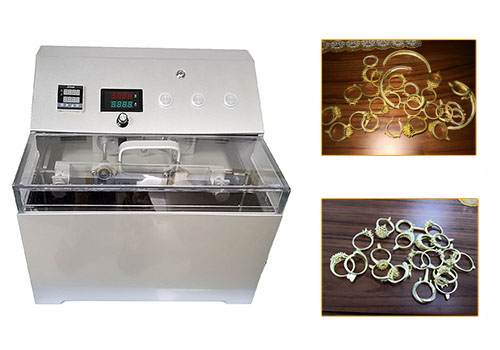
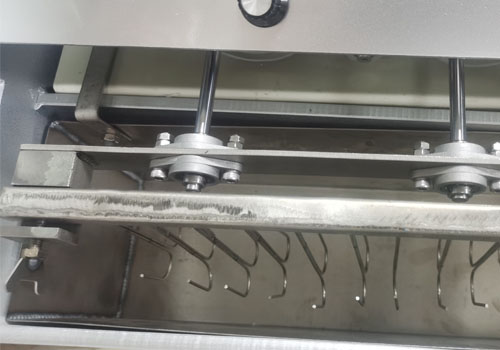
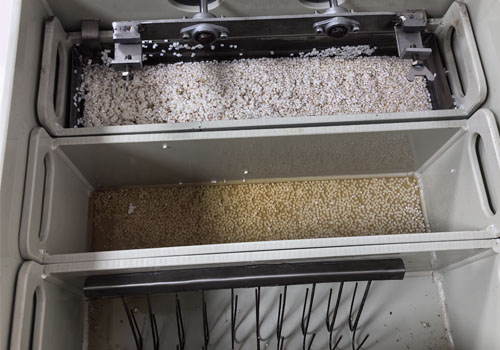

 © Copyright 2008-2021 Superb Electromachinery Co., Limited
© Copyright 2008-2021 Superb Electromachinery Co., Limited